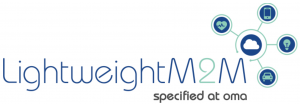
By Hannes Tschofening, OMA SpecWorks
The standardization work on the LwM2M v1.2 specification has been completed and the specification bundle is now available for public download.
Originally proposed in 2012, LwM2M v1.0 was finally published in early 2017 after comprehensive research with developers across multiple industries and application areas. The original standard was a compelling solution for device lifecycle management with focus on constrained IoT devices. With LwM2M adoption observed across a broader range of device types and the benefit of feedback from real use cases, releases including v1.0.1 and v1.0.2 were published to keep up with ever increasing demand and expansion of LwM2M use. With v1.1 published in 2018, OMA SpecWorks increased the functionality of the protocol by adding support for Cellular IoT, LoRaWAN as well as in enterprise networks with CoAP over TCP/TLS.
Over the years, implementers have developed many client and server software implementations for the industry. With the rise in number and frequency of new implementations, OMA SpecWorks hosted 8 testfests to ensure implementations conform to specification. Concurrently with the evolution of the LwM2M protocol, organizations and companies have been adding to the range of objects and resources via a dedicated registry which can be seen here LwM2M registry
Objects and resources allow developers to manage IoT devices in a convenient and interoperable way. Describing new sensors and actuators requires specific domain expertise. It is a testament to the popularity and usefulness of the standard when so many contributions are made by standards development and industry organizations as well as companies from different verticals and industries.
Work with the developer community has guided LwM2M v1.2 workgroups to onboard suggestions for various types of optimizations and to open up new deployment possibilities with the addition of MQTT and HTTP-based transport to LwM2M. Versions of LwM2M to date have focused support on CoAP-based transport over IP and non-IP based bearers. With the introduction of MQTT and HTTP support, the developer community, who has expressed strong interest in them, will be able to select the truly best option for each deployment environment. Also being introduced in v1.2, support for gateways allows deployment managers to connect islands of IoT devices while maintaining all capabilities offered with LwM2M. A new range of optimizations apply developments in research and standardization organizations, allowing IoT device management to be applied to even more constrained IoT environments.
Companies developing or improving commercial IoT products and services can explore a wide range of new possibilities with the release of v1.2. The added reach and flexibility of the new version will unquestionably increase the rate of adoption and breadth of use of LwM2M, further establishing its standing as a key standard for the IoT. We look forward to a successful introduction and to receiving your feedback about new and enhanced functionalities as well as defining the scope of the next version, further addressing opportunities with newer deployment scenarios including 5G.
The specification can be found at LwM2M v1.2
About Open Mobile Alliance (OMA)
OMA is the leading industry forum for developing market-driven, interoperable mobile service enablers. OMA was formed by the world’s leading mobile operators, device and network suppliers, information technology companies, and content providers as the industry focal point for the development of mobile service enabler specifications. OMA is a non-profit organization that delivers open specifications supporting the billions of new and existing terminals operating across traditional cellular operator networks and emerging networks supporting machine-to-machine communications for the Internet of Things (IoT). New work in OMA is leading to the development of next-generation mobile services in areas such as Device Management, LBS, IoT, APIs and more. See About OMA
